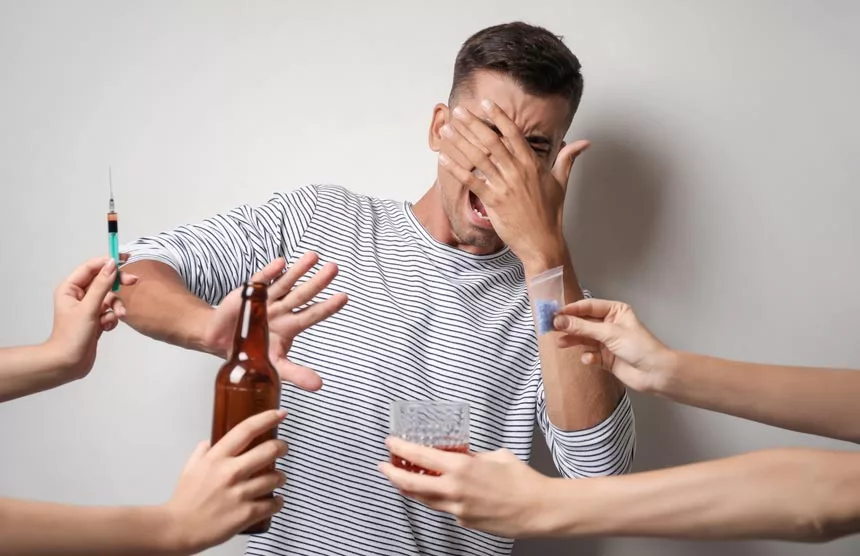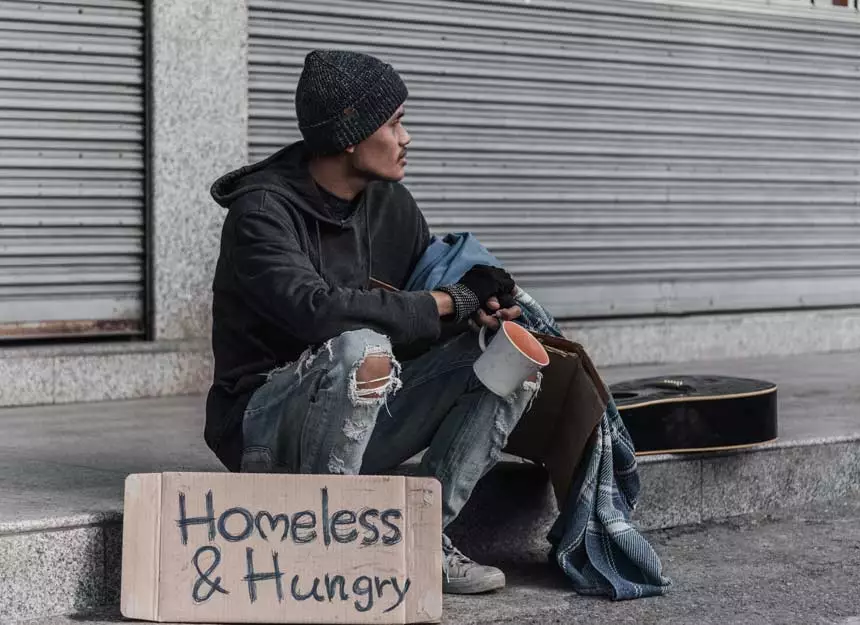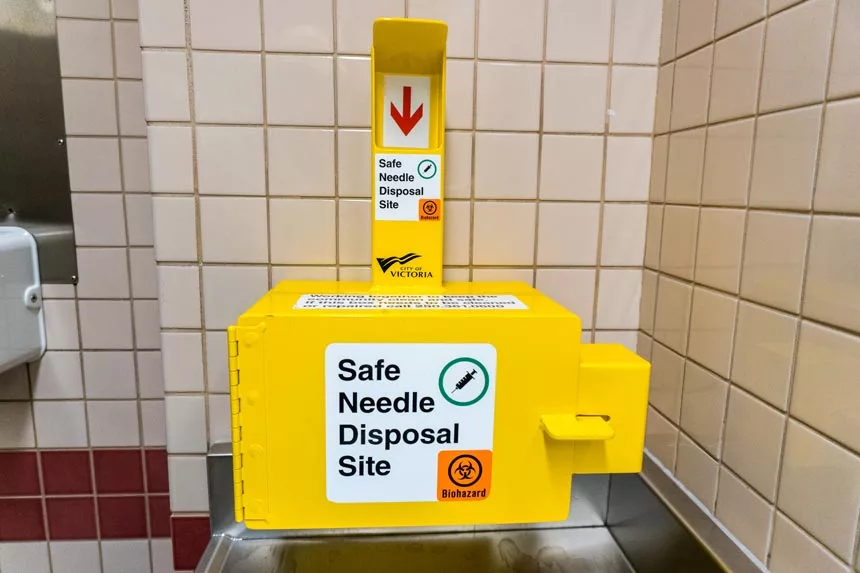What is Harm Reduction Recovery?
As a concept, Harm Reduction Recovery refers to the policies, processes, and practices that are being put in place to minimize the very real and tragic harm that often results from alcohol and drug use.
Prioritizing compromise, the harm reduction approach recognizes that some individuals, including those that actively want to improve their lives, are not yet ready or equipped to overcome their substance abuse problems.
Thus, rather than judging or taking control over a person’s addiction, this model provides a way for them to actively make safer and healthier choices regarding their substance use. Ultimately, the harm reduction model focuses on gradually improving community health through offering the tools and spaces individuals need to more safely engage in substance use.
These services can significantly help reduce an individual’s chances of experiencing harmful consequences due to their use of alcohol or other drugs. Furthermore, they can provide the support and resources these people need to eventually be able to choose to seek medical care and treatment.
The Principles of the Harm Reduction Model
The harm reduction approach follows a series of several principles in its method of addressing substance use disorders. These provide a way of minimizing the damage these substances can cause – whether to people who use drugs or those around them – and prioritize maintaining:
- An approach focused on meeting people where they are in their experience with substance abuse.
- The goal of treating anyone who chooses to participate in these programs – regardless of their habits – with dignity, compassion, and respect.
- Opposition to the stigmatizations and misconceptions surrounding addiction and addiction treatment.
- The use of policies and practices that are based on evidence and research.
- The acceptance of the fact that behavioral changes are often a gradual process, rather than something that happens all at once.
- The inclusion of all individuals, whether they are struggling with active addiction, are in recovery, or simply just members of the community, when creating policies and practices.
- A focus on improving individual and communal qualities of living, rather than prioritizing complete abstinence.
- A commitment to protecting and promoting universal human rights.
- The empowering of individuals in serving as the primary agents responsible for improving their well-being and effectively dealing with their addictions.
The Harm Reduction Approach to Substance Abuse
There are several ways in which the harm reduction model seeks to combat the dangers associated with alcohol and drug abuse. While the goal of harm reduction is not necessarily to promote an individual’s complete cessation of substance use, this approach certainly allows for positive changes in the way addiction is societally viewed and approached.
Rather than choosing to simply just ignore individuals who resist seeking treatment for their addiction, this model takes proactive steps in improving individual and community life through:
- Reducing the rate of overdose deaths.
- Establishing effective disease control methods.
- Gradually achieving successful interventions through providing non-judgemental support, and providing consenting individuals with treatment referrals.
- Establishing a pathway to addiction treatment programs.
- Finding more cost effective ways of managing substance use and its potential consequences.
Overdose Prevention and Harm Reduction
Unfortunately, it is not uncommon for unsupervised drug use to quickly become fatal. Particularly in the United States, opioid addiction has progressed to the point that, in 2017, the U.S. Department of Health and Human Services officially declared this form of drug use a public health emergency.
This phenomenon, referred to as the “opioid epidemic,” resulted in over 70,000 overdose deaths in 2019 alone; and these numbers are only increasing. In response to the harmful effects of this illicit drug (and other drugs), the harm reduction model has taken several steps to provide safer ways in which individuals can use them.
These include providing individuals with overdose reversal medications (i.e., naloxone), as well as training them on how to administer these drugs, creating safe injection sites featuring constant medical supervision for individuals who rely on injecting drugs, and several others.

Disease Control
There are multiple ways in which drug consumption can result in the spread of diseases, such as using and exchanging dirty needles, causing impaired judgment which can lead to engaging in unprotected sex or creating other health conditions related to prolonged substance use.
Through their administration of supervised injection sites, as well as providing educational resources on substance abuse, harm reduction programs have significantly decreased cases of blood-borne infections, such as Hepatitis and HIV. Most importantly, this is done without increasing cases of illicit drug use.
Interventions and Establishing a Path to Treatment
Harm reduction programs, while not based on the intention of convincing individuals to seek out addiction treatment, have been found to serve as a gateway to these programs. This is accomplished purely through providing individuals with a non-judgmental means of gaining information and assistance.
According to the Centers for Disease Control and Prevention (CDC), over 85% of almost 200 syringe access programs regularly referred individuals to treatment programs in 2005 alone. Furthermore, even outside of these referrals, harm reduction programs have been found to cause an overall reduction in drug use and drug-related harm.
The Cost-Effectiveness of Harm Reduction Programs
Harm reduction programs have repeatedly been found to be financially efficient. In fact, studies conducted throughout several different countries have provided evidence that syringe access programs are cost-effective not only on a societal level but within the healthcare community as well.
This is primarily due to their efficiency in stopping the spread of infectious diseases, thus minimizing the costs of long-term treatment that individuals with these illnesses generally require.
The Role of Social Inequalities In Creating a Substance Use Disorder

When it comes to people who use drugs, there are several factors that go into their decision to engage in these habits, as well as their ultimate development of an addiction. These may include mental health issues, family histories, and past trauma, amongst several others.
Another reason why an individual may develop a substance use disorder, however, can be attributed to the ways in which social inequalities affect certain populations. For example, a person’s socioeconomic settings, as well as their exposure to racial or sex-based discrimination, can all produce negative feelings and circumstances that result in drug or alcohol abuse.
Furthermore, not only can these play a prominent role in increasing an individual’s chances of developing an addiction, but they can significantly hinder their access to and ability to receive professional treatment for this condition as well.
Harm Reduction Strategies for Drug Use
For individuals with an alcohol use disorder or drug addiction, strong cravings for these substances can result in their resorting to any means possible of acquiring them. This, unfortunately, can lead to their engagement in activities that can be harmful to both themselves and others.
For example, committing theft, acquiring substances from questionable sources, or re-using old drug equipment and / or sharing unsanitized paraphernalia can all result in negative consequences for both the user and those around them.
In light of these factors, encouraging people to seek addiction treatment is certainly necessary. However, the harm reduction coalition recognizes that not everyone has the means to do so. Thus, this model has developed several strategies meant to enhance the actual conditions in which these individuals use substances.
Through their creation of safe spaces and non-coercive provision of drug paraphernalia, harm reduction methods have made significant improvements in the health and safety of many communities. Some of these services include:
- Syringe Access Programs
- Safer Consumptions Spaces
- Naloxone Distribution and Training Programs
Syringe Access Programs
Also known as needle syringe programs or needle exchange programs, this harm reduction practice focuses on providing sterile injecting equipment, such as needles and syringes.
Not only does this help minimize the spread of infectious diseases, but it serves as a means of educating addicted individuals on the various risks that come with substance abuse. These programs also provide other services, including:
- The distribution of materials that can further help prevent the spread of diseases, such as alcohol swabs and condoms.
- Providing referrals to addiction treatment services, including medication-assisted treatment options (i.e., medically supervised detox programs).
- Providing access or referrals to other medical, mental health, legal and/or social services.
- Spreading information and educational resources on the reduction of substance use and drug related harm, as well as the prevention of diseases and overdose, Naloxone administration training, and safer injection practices.
Safer Consumption Spaces

These spaces, which may also be referred to as drug consumption rooms, or medically supervised injection centers (amongst others), are legally sanctioned sites where individuals can engage in substance use under careful medical observation.
While these may appear to encourage drug use, this is not at all the case. In fact, these spaces prohibit the exchanging of recreational drugs within them, and will oftentimes require individuals to provide a form of identification or proof of residency to be able to use them.
Furthermore, like the needle exchange programs, they provide several other benefits and services, including the prevention of infectious diseases, provision of treatment referrals and educational resources, and the minimization of overdose deaths.
Naloxone Distribution and Training Programs
Particularly in the case of individuals with opiate addiction, the distribution of naloxone (a medication used to reverse the effects of overdose) and the provision of training for its proper administration has proven to be significantly effective in reducing incidents of overdose deaths.
These training programs, coupled with overdose education resources, help individuals recognize the risk factors and signs of opioid overdose and teach them how to take proactive steps in preventing this from occurring.
Furthermore, harm reduction services may include the provision of extended-release naltrexone, which is an FDA-approved medication used to prevent relapse in individuals who have struggled with an opioid use disorder.
The Misconceptions of the Harm Reduction Recovery Model
There are several misconceptions that currently surround harm reduction programs and practices. Of course, most of these stem from the stigmatizations that surround drug and alcohol use. These misunderstandings may include beliefs that:
- Harm reduction practices enable illegal drug use and provide drugs to individuals.
- Harm reduction condones and/or promotes substance abuse.
- Harm reduction programs will increase the rates of substance use and drug-related crime in their communities.
While it is not hard to see how these fears may have developed without a proper understanding of this model, it is important to recognize that they hold little truth to them. In fact, as discussed, the harm reduction approach has actually facilitated positive change not just for actively addicted individuals, but for the people around them, and even within the recovery community.
Other Substance Abuse Treatment Options
There are several addiction treatment programs available today, which may incorporate a wide variety of approaches to the recovery process. These may include more holistic or spiritually-influenced practices or those that utilize clinically-based research in their treatment approach.
Most professional addiction treatment services will adhere to an accepted “Continuum of Care” model, which features 7 levels of care in its recovery approach. In the event that individuals engaging in the harm reduction model find themselves willing to seek out professional treatment, they will likely be referred to a rehab facility that can provide them with medical treatment.
This is because people who use drugs on a regular basis often cause significant chemical changes and damage to their bodies. In fact, certain forms of substance abuse (i.e., an alcohol addiction, or a dependence on opioids or benzos) can be particularly dangerous in their withdrawal periods; and, in extreme cases, fatal.
In these instances, individuals are strongly encouraged to undergo a medical detox treatment process, in order to minimize their risk of experiencing severe withdrawal symptoms. Furthermore, this treatment method will often include the administration of controlled medications to manage these symptoms should they occur.
Ultimately, it is up to the individual to determine which method of treatment they wish to receive. Of course, speaking with their medical provider or an addiction treatment professional can help them narrow down their options.
Find the Right Treatment Options for You, Now!
If you or a loved one is struggling with addiction, and are ready to start seeking out treatment options, know that you are not alone, and help IS available. Here at Find Addiction Rehabs, we understand how difficult the process of finding a recovery approach that works for you can be; but that is why we are here.
With our hotline available 24/7, our representatives are ready at any time of the day (or night) to provide you with the addiction resources and support you need. Whether connecting you with the best addiction treatment centers in your area or answering your substance abuse questions, we are here for you.
Making the choice to begin your recovery journey can feel impossible, but it does not have to. Just by picking up the phone and calling us today, we can help you get started on the path to sobriety. So make the best choice for you, and let us help you take the first step on your road to becoming a happier, healthier, and sober you!
About the Author:
Nicole R. is an experienced writer with an interest in the fields of Anthropology, English, and behavioral health, and has written countless articles for newspaper publications, institutional research journals, and the Find Addiction Rehabs blog. She hopes to spread awareness of and combat the stigmatization surrounding addiction and substance abuse treatment through her writing and work.

